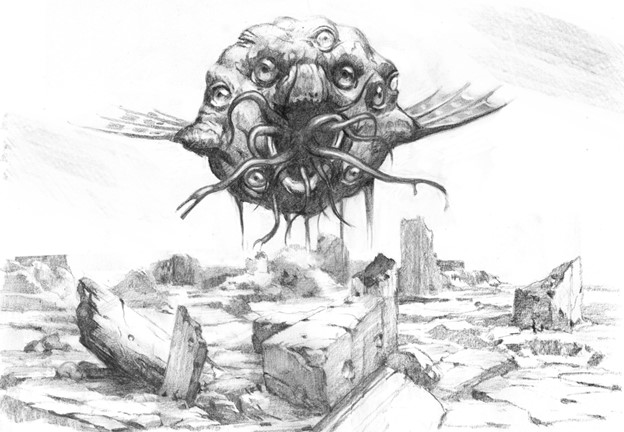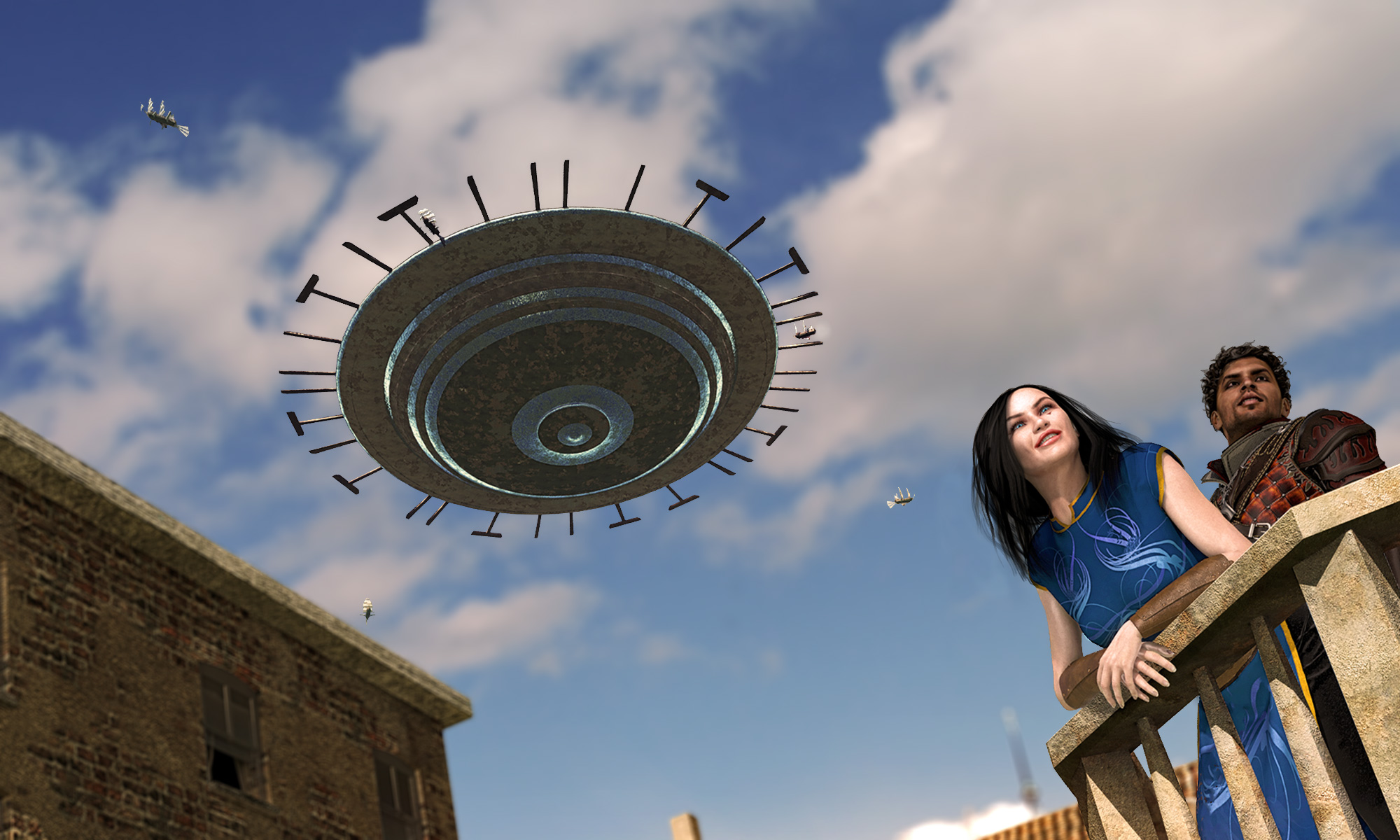
One of the least utilized of Shadow World creatures are those that dwell “Beyond the Pale”. Known as the Agothu, they seem to have appeared in the “Atlas Addendum” found in the Emer box set. I’m going to write more about the addendum in a separate blog, but in my mind, it’s where much of the essence of Shadow World was set down after a number of generic third party SW modules.
The Agothu, or “Older Ones” are very reminiscent of the Cthulhu mythos: indescribable extra-dimensional beings of terrifying appearance and power. They are brought full-fold into the setting by at least the Master Atlas 3rd Ed. (anyone have 2nd edition to check?) with some changes and expansion from the original Addendum material. Generally, these creatures come in two types: Agothu and Agothu Servants (also known as Destroyers) although it’s not given that an Agothu is more powerful or higher level then a servant. In fact, several of the Destroyers are formidable…
Terry expanded the creatures by adding a Agothu (Breathless) and increasing the Destroyers from 5 to 7. Interestingly, one of the Destroyers, the “Nof-Kef” was eliminated in later books. If I recall, the Nof-kef was specific to the third party module “The Orgillion Horror” and it appears that Terry struck that creature out of Canon quite early? My own impression is that the Agothu were added in the Atlas Addendum to incorporate the material in Orgillion, but Terry then embraced it and made the Agothu his own.
Unfortunately, he never really incorporated the Agothu into his later material. There is a mention in the Grand Campaign, but aside from that, the Agothu are only used in reference to Shrek.

That’s unfortunate because the Older Ones are yet another cool element that makes Shadow World a unique setting and not another Orc/Skeleton/Dragon fantasy world. Agothu are between 5th and 30th level so they can be incorporated into any campaign. Agothu are also an example of Terry’s creativity and feature some of his most descriptive writing.
For example:.
are vaguely humanoid, but their
oversized heads are little more than skulls. Their bodies are covered
by a skin like grey parchment, dry and peeling. Their large,
claw-like hands are skeletal. Their eyes show moisture, however,
oozing a bloody liquid as they move in their sockets.
Or this:
They are covered by tough,
toenail-like protrusions, which form a scaly skin. Life Eaters have
beaks instead of mouths, surrounded by an array of eight squidlike
tentacles, tipped with hollow spines. They have four eyes in
the front and four in the rear of their elliptical skull. Four ears
crown their heads, each protected by a bony tusk. Their four arms
end in four-fingered talons.
Imagine your players encountering this fella:
are vaguely anthropoid, with a certain ‘melted’ look.
Closer inspection reveals a tripedal rather than bipedal structure,
with skin pulsing with external veins and arteries. Their
feet are mere stumps, and their three long arms each end in three
strong tentacles, each equipped with a row of powerful suction
cups with sharp serrated rims. The head is no more than a
neckless ovoid punctured by three nostrils and three unblinking
eyes,
This is really the stuff of nightmares and in line with the grim dark feel of the Emer: The Great Continent. At this risk of being redundant I’ll say that it’s this Shadow World specific content that brings the setting to life.
Tell us about any of your Agothu encounters!














